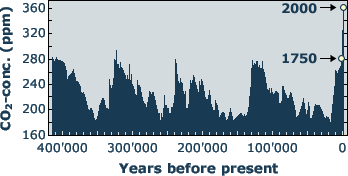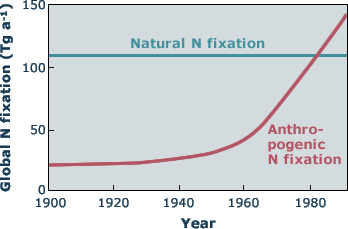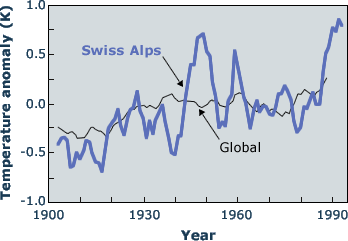 |
|
|
|
|
|
|
The enrichment of the atmosphere with CO2 and soluble N-compounds is a given, unquestioned part of global change.
|
1 - The 420'000 year course of atmospheric CO2 concentration as reconstructed from antarctic ice cores. Note the 180-290 ppm range from which current trends significantly deviate (Petit et al. 1999). |
|
2 - Anthropogenic vs. natural N-fixation (Vitousek 1994). |
3 - Climate warming: a comparison of global trends in mean surface temperature anomalies with those averaged for eight high elevation sites in the Alps (smoothed out with a 5-year filter) (Beniston et al. 1997). |
29 August 2011 |
||
| |
||


